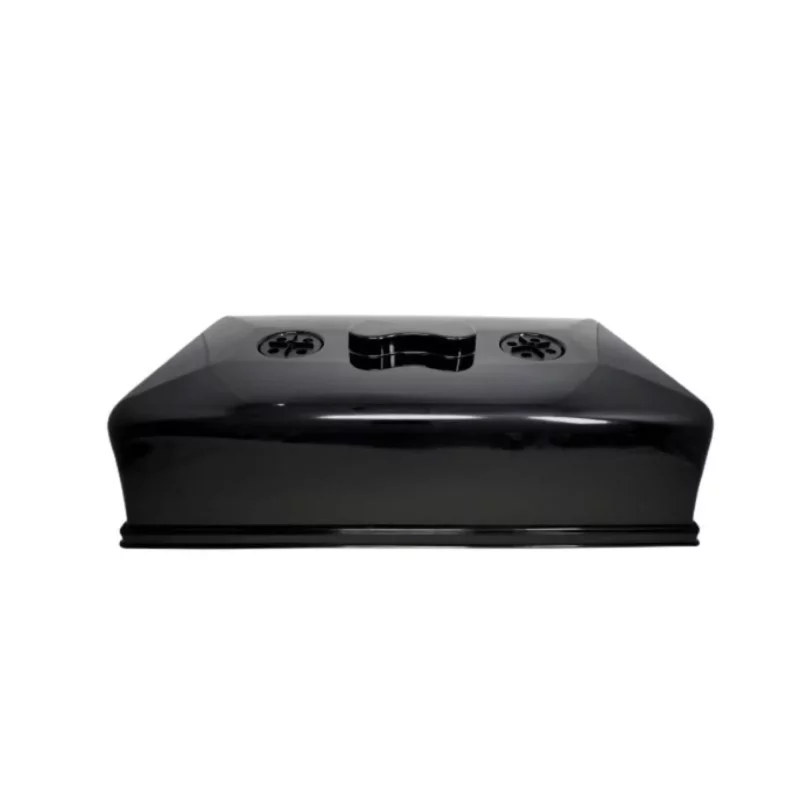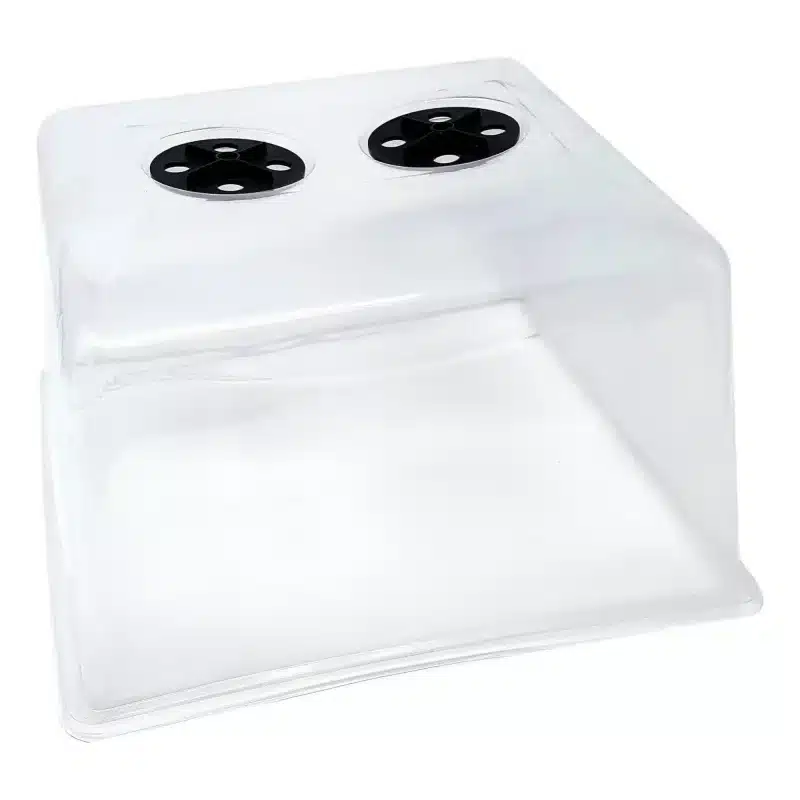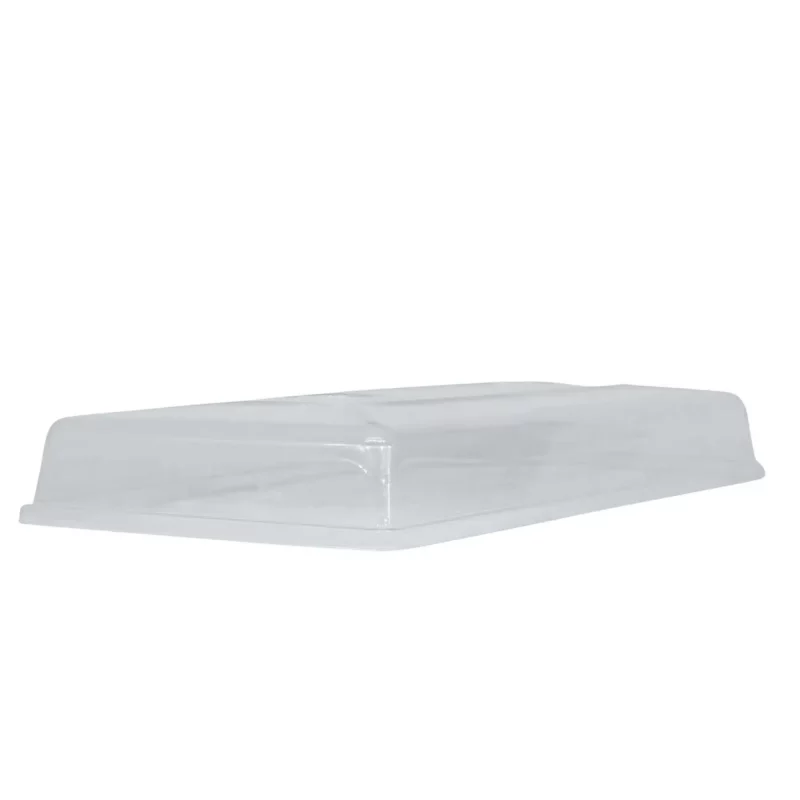Maximizing Seed Germination: A Deep Dive into Humidity Domes
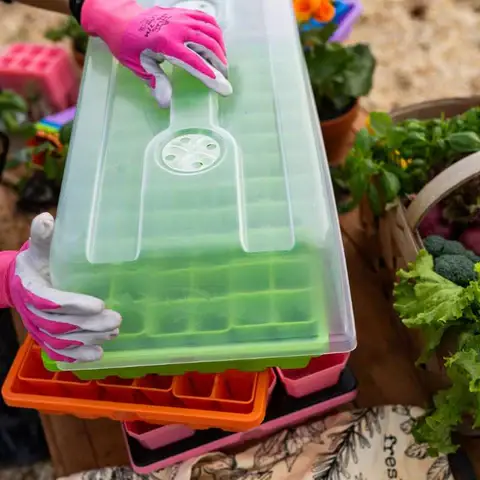
Maximizing Seed Germination: A Deep Dive into Humidity Domes
Humidity domes are invaluable tools for gardeners looking to maximize seed germination rates and create optimal conditions for young seedlings. By trapping moisture and warmth, these domes mimic a greenhouse environment, giving your seeds the best possible start. This article expands on the use of humidity domes, highlighting which seed varieties thrive under them, which ones don't, and how their use differs when germinating microgreens.
The Benefits of Humidity Domes
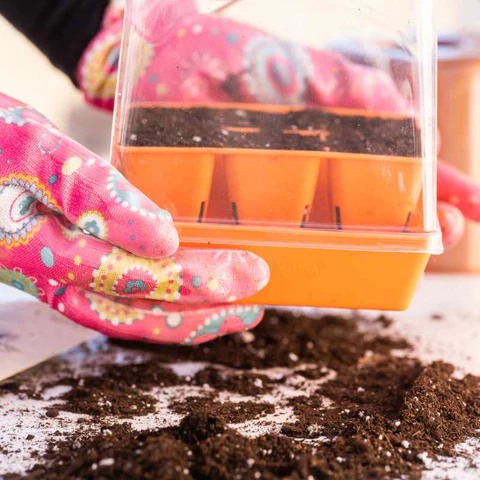
Humidity domes offer several advantages
Increased Germination Rates: Maintaining consistent moisture levels is crucial for successful germination. Domes prevent soil from drying out, ensuring seeds have the hydration they need to sprout.
Optimal Temperature Regulation: Domes trap warmth, creating a cozy environment that speeds up germination, particularly for heat-loving plants.
Protection for Delicate Seeds: Domes shield seeds and seedlings from drafts, pests, and sudden temperature fluctuations.
Reduced Watering Frequency: By minimizing moisture loss, domes lessen the need for frequent watering, simplifying the seed starting process.
Blackout domes are light-blocking humidity domes, essential for growing crops like popcorn shoots in complete darkness. They also benefit other microgreens by promoting stem elongation for easier harvesting. Bootstrap Farmer blackout domes, designed for professional microgreen growers, fit standard 1020 trays and effectively block light, even with vents partially open.
How long do you keep seedlings under humidity domes?
Humidity domes significantly reduce watering during germination by maintaining consistent moisture.
However, they must be removed once sprouting begins to prevent mold. For delicate seedlings, gradually reduce humidity by propping the dome or using our adjustable vents to introduce airflow before full exposure. Sprouted seedlings require light and air to thrive.
Day and Night use of Humidity Domes
The practice of adjusting humidity dome usage between day and night involves careful consideration of seedling needs and environmental factors. Here's a breakdown of the key considerations:
Hardening Off
"Hardening off" refers to gradually exposing seedlings to ambient air during the day helps them harden off, preparing them for transplanting outdoors.
During the Day
Seedlings need light for photosynthesis. Removing the dome during the day allows them to receive adequate light.
Air circulation is crucial for preventing fungal diseases like damping-off. Removing the dome or opening vents promotes airflow.
Daytime temperatures tend to be higher, which can lead to excessive heat and humidity under a dome, potentially harming seedlings.
During the Night
Nighttime temperatures can drop, and humidity levels can fluctuate. Placing the dome back on at night can help maintain a more stable environment, especially for heat-loving seedlings.
Humidity domes can help prevent overnight drying, which is important for delicate seedlings.
Domes can offer some protection against pests and minor temperature dips during the night.

Seedling Stage
Newly germinated seedlings are more sensitive to environmental changes and may benefit from consistent humidity, even at night. As seedlings mature, they become more tolerant of fluctuations and require less humidity.
Environmental Conditions
If nighttime temperatures are consistently warm and humidity levels are stable, you may not need to use the dome at night.
In colder climates or during periods of fluctuating temperatures, nighttime dome usage can be beneficial.
Even when using domes at night, ensure adequate ventilation to prevent excessive humidity buildup. Vented domes are highly recommended.
Regularly observe your seedlings for signs of stress, such as wilting, mold growth, or leggy growth. Adjust your dome usage accordingly.
In summary
The general trend is to remove domes during the day for light and airflow, and replace them at night for temperature and humidity stability. However, close observation of the seedlings and the surrounding environment is very important. Vented domes provide the best of both worlds.

Seeds that Love Humidity Domes
Warm-Season Vegetables: Tomatoes, peppers, eggplants, and okra thrive in the warm, humid environment created by domes. These plants originate from warmer climates and require higher temperatures for germination.
Tiny Seeds: Small seeds like lettuce, spinach, herbs (especially basil and amaranth), and carrots are prone to drying out quickly. Humidity domes help retain moisture, significantly improving their germination rates.
Light-Sensitive Seeds: Some seeds, like certain varieties of lettuce, prefer darkness for germination. While not directly related to humidity, blackout domes (which are simply humidity domes with a light-blocking cover) provide both the darkness and humidity these seeds need.
"Trickier" Crops: Crops like amaranth, basil, and carrots benefit significantly from humidity domes.
Humidity Domes and Microgreens
While the basic principle of trapping moisture remains the same, there are key differences in how humidity domes are used for microgreens:
Stacking vs. Ventilation: For most microgreens, seeds are densely sown and often stacked during the initial germination phase. This creates a dark, humid environment. Humidity domes can be used for microgreens that are extremely small, sticky, or need light to germinate.
Preventing Mold while using Humidity Domes
Overusing humidity domes can lead to mold. For staggered germination, adjustable vents are key. Open them when most seeds have sprouted to introduce airflow while maintaining elevated humidity. This helps prevent mold, which often disappears with increased air and light. Clean domes thoroughly between uses and plant seeds with similar germination times to minimize mold risk. Wash trays with soap, rinse, and sanitize with 3% hydrogen peroxide."
Which Seed Varieties like Humidity Domes and which don't?
Not all seeds benefit equally from humidity domes. Here's a breakdown to help you decide when to use them:
Seeds Less Enthusiastic About Domes
Large Seeds: Beans and peas have substantial moisture reserves within the seed itself. They generally don't require the high humidity provided by a dome and may even be susceptible to rot if overwatered in a humid environment.
Dry-Climate Seeds: Seeds from plants native to arid regions, such as many succulents and desert wildflowers, are adapted to drier conditions. High humidity can be detrimental to their germination.
Onions and Leeks: These are exceptions to using individual containers and do not require humidity domes.
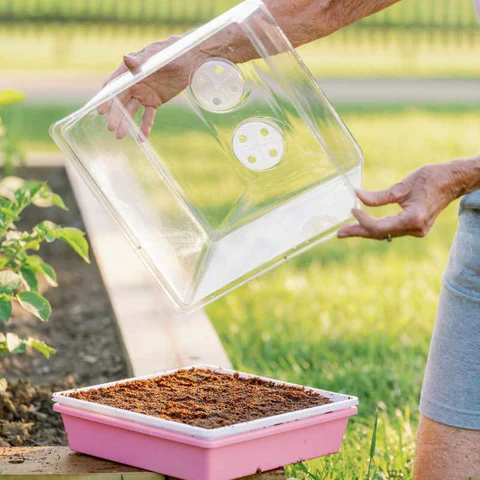
Blackout Period: Many microgreens benefit from a "blackout period" after sowing. This is often achieved by using blackout domes or stacking trays, promoting stem elongation and better yields. This is separate from humidity, but blackout domes serve both purposes.
Timing of Removal: With microgreens, the dome is typically removed much sooner than with seed starting, often within 24-48 hours of initial germination. This prevents the tiny roots from drying out while allowing them to anchor into the growing medium.Transport: Humidity domes are also very useful for the transport of fresh microgreens and small plants.
Tricky Microgreens: For microgreens with challenging seeds—those that are very small, sticky (like basil), or require light to germinate—humidity domes are essential. Basil seeds, for example, turn into a sticky gel when moistened, making stacking impossible. Using a dome ensures even moisture and prevents seed clumping. Remember to remove the dome promptly, 24-48 hours after germination, to prevent root dehydration.
In conclusion
Humidity domes are a powerful tool for any gardener, but understanding which seeds benefit most and how to adapt their use for microgreens is key to maximizing their effectiveness. Generally speaking, humidity domes are going to boost germination and thus your productivity - at Natural Yield we use humidity domes as part of our regular grow operations for both microgreens and seed starts.


